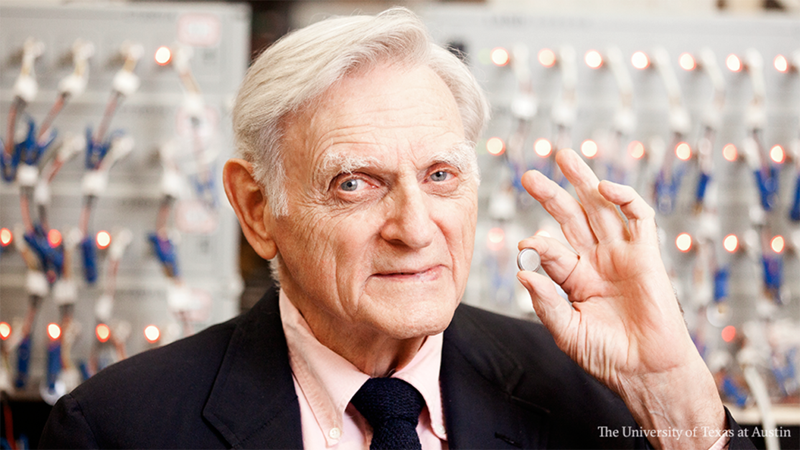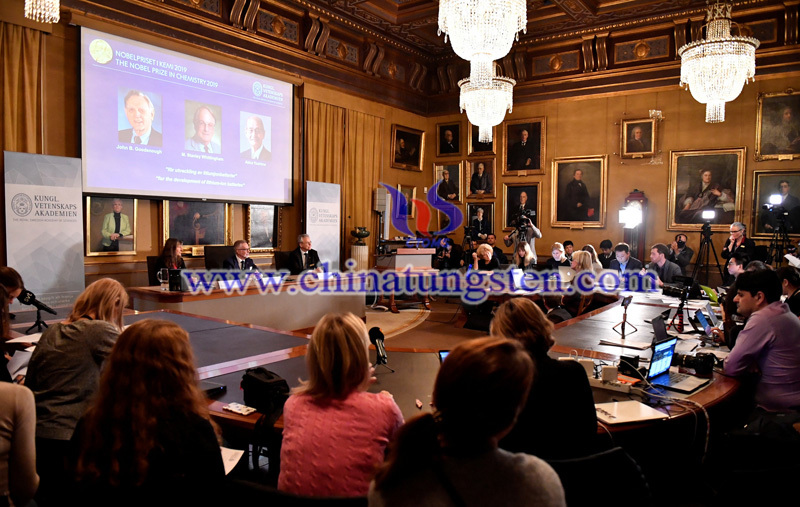For Lithium Batteries Development, John Goodenough Becomes Oldest-Ever Winner of Nobel Prize
- Details
- Category: Tungsten's News
- Published on Friday, 11 October 2019 09:04
For developing lithium batteries, John Goodenough of the University of Texas at Austin, Stanley Whittingham of Binghamton University, State University of New York, and Akira Yoshino of the Asahi Kasei Corporation in Japan were announced as the winners of the Nobel Prize at chemistry by the Royal Swedish Academy of Sciences at about 5:50 pm Beijing time on October 9. It is particularly worth mentioning that during the promulgation of the Chemistry Prize in recent years, a scientist has received extensive attention. He is John B. Goodenough!
Goodenough, who was born in 1922, identified and developed the critical materials that provided the high-energy density needed to power portable electronics, initiating the wireless revolution. Today, batteries incorporating Goodenough's cathode materials are used worldwide for mobile phones, power tools, laptops, tablets, and other wireless devices, as well as electric and hybrid vehicles.

He researched on random access memory (RAM) development at the Lincoln Laboratory of the Massachusetts Institute of Technology. In the late 1970s and early 1980s, he served as director of the Inorganic Chemistry Laboratory at Oxford University and developed lithium cobalt oxide, the cathode material of choice for lithium-ion rechargeable batteries. Since 1986, John Goodenough has served as a professor of mechanical engineering and mechanical engineering at the University of Texas at Austin and continues to study ion-conducting solids and electrochemical devices.
Goodenough is recognized as the "father of lithium batteries" and the Nobel Prize is well deserved. It is his innovation that has led to the commercialization of lithium batteries towards smaller, larger capacity, and more stable. From laptops to smartphones, lithium-ion batteries power some of the most commonly used devices. Electric vehicles were made possible because of the development of these batteries, and wireless communication has flourished because of it.

Early lithium batteries use lithium metal as an electrode material, which was highly prone to combustion and explosion during battery use, and thus could not be widely used. To solve this problem, Goodenough proposed the working mechanism of lithium-ion intercalation and deintercalation. Use lithium cobalt oxides, lithium manganate, and lithium iron phosphate to replace metallic lithium as a stable electrode material, which solved the safety problem. The manufacturing cost of the battery has revolutionized and greatly promoted the wide application of this technology in other fields.
Today, at 97 years old, the "father of lithium batteries" and oldest-ever winner of Nobel Prize - John Goodenough continues to push the boundaries of materials science to invent more sustainable and energy-efficient battery materials. Goodenough and his team recently identified a new safe cathode material for use in sodium-ion batteries.
- Tungsten Manufacturer & Supplier, Chinatungsten Online: www.chinatungsten.com
- Tungsten News & Prices of China Tungsten Industry Association: www.ctia.com.cn
- Molybdenum News & Price: news.molybdenum.com.cn
- Tel.: 86 592 5129696; Fax: 86 592 5129797; Email: sales@chinatungsten.com



 sales@chinatungsten.com
sales@chinatungsten.com